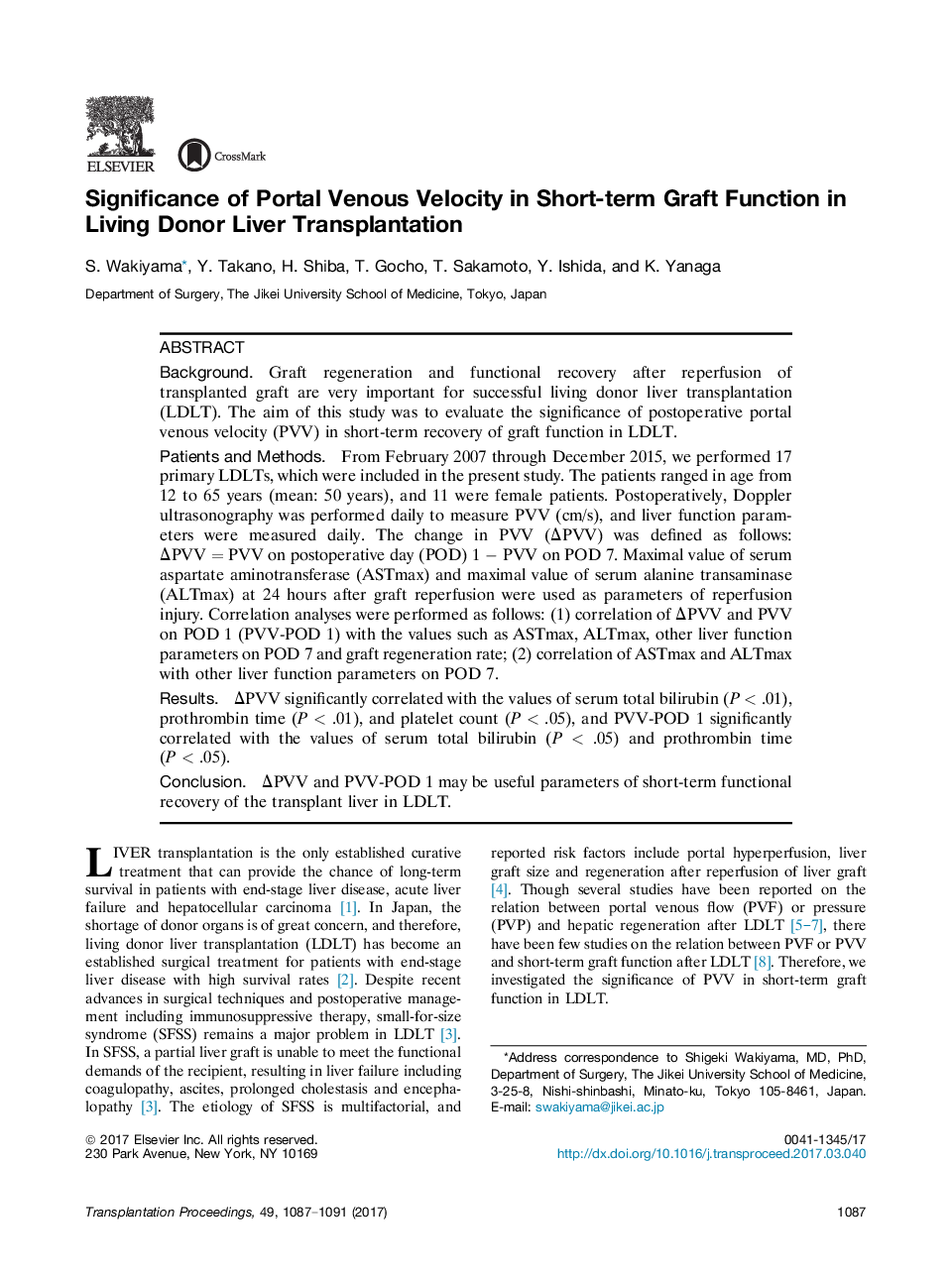| Article ID | Journal | Published Year | Pages | File Type |
|---|---|---|---|---|
| 5728805 | Transplantation Proceedings | 2017 | 5 Pages |
BackgroundGraft regeneration and functional recovery after reperfusion of transplanted graft are very important for successful living donor liver transplantation (LDLT). The aim of this study was to evaluate the significance of postoperative portal venous velocity (PVV) in short-term recovery of graft function in LDLT.Patients and MethodsFrom February 2007 through December 2015, we performed 17 primary LDLTs, which were included in the present study. The patients ranged in age from 12 to 65 years (mean: 50 years), and 11 were female patients. Postoperatively, Doppler ultrasonography was performed daily to measure PVV (cm/s), and liver function parameters were measured daily. The change in PVV (ÎPVV) was defined as follows: ÎPVVÂ =Â PVV on postoperative day (POD) 1Â â PVV on POD 7. Maximal value of serum aspartate aminotransferase (ASTmax) and maximal value of serum alanine transaminase (ALTmax) at 24 hours after graft reperfusion were used as parameters of reperfusion injury. Correlation analyses were performed as follows: (1) correlation of ÎPVV and PVV on POD 1 (PVV-POD 1) with the values such as ASTmax, ALTmax, other liver function parameters on POD 7 and graft regeneration rate; (2) correlation of ASTmax and ALTmax with other liver function parameters on PODÂ 7.ResultsÎPVV significantly correlated with the values of serum total bilirubin (PÂ < .01), prothrombin time (PÂ < .01), and platelet count (PÂ < .05), and PVV-POD 1 significantly correlated with the values of serum total bilirubin (PÂ < .05) and prothrombin time (PÂ <Â .05).ConclusionÎPVV and PVV-POD 1 may be useful parameters of short-term functional recovery of the transplant liver in LDLT.
